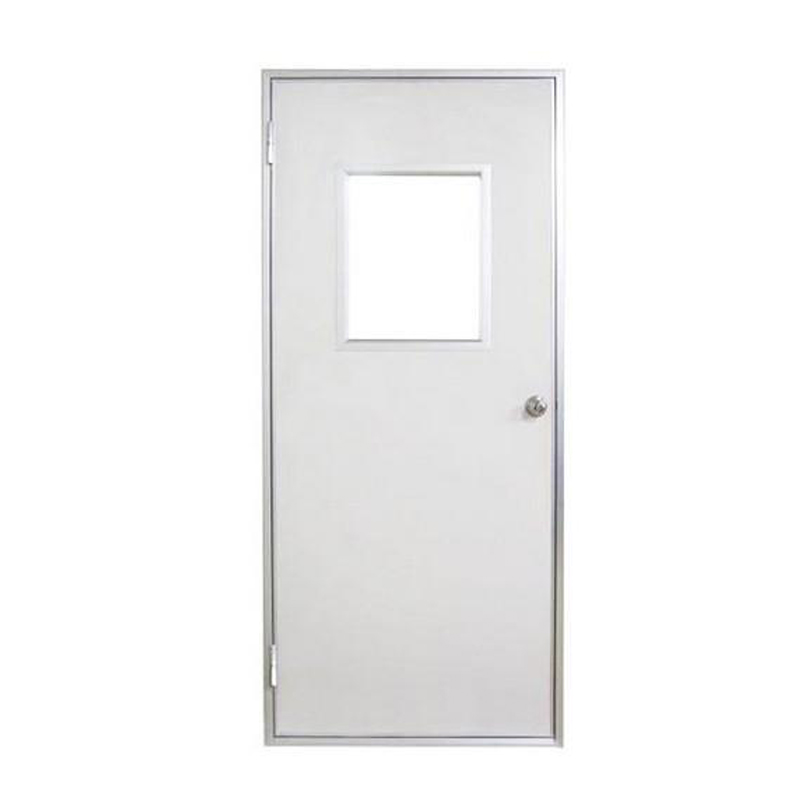

When selecting materials for cleanroom doors to ensure […]
When selecting materials for cleanroom doors to ensure durability and compliance with cleanroom standards, it’s important to consider properties such as chemical resistance, ease of cleaning, low particle generation, and structural integrity. Here are some of the most suitable materials:
1. Stainless Steel
Grades: Typically, 304 or 316 stainless steel is used.
Advantages:
High resistance to corrosion and chemicals, making it ideal for environments with stringent cleaning protocols.
Smooth, non-porous surface that is easy to clean and sterilize.
Durable and resistant to impact, ensuring long-term performance.
Low particle generation, maintaining cleanroom standards.
Applications: Commonly used in pharmaceutical, biotechnology, and food processing cleanrooms.
2. High-Pressure Laminate (HPL)
Advantages:
Provides a smooth and durable surface that can withstand frequent cleaning and disinfecting.
Available in a variety of finishes, including anti-microbial coatings.
Resistant to scratches and impact, ensuring a long lifespan.
Applications: Suitable for cleanrooms in healthcare, electronics, and manufacturing industries.

3. Polypropylene (PP) and Polyethylene (PE)
Advantages:
Excellent chemical resistance, particularly to acids and alkalis.
Lightweight and easy to install.
Low outgassing and particle generation, maintaining cleanroom air quality.
Applications: Often used in semiconductor and microelectronics cleanrooms where chemical resistance is crucial.
4. Glass (Tempered or Laminated)
Advantages:
Provides visibility, allowing for monitoring without breaching the cleanroom environment.
Smooth and non-porous surface that is easy to clean.
Tempered or laminated glass offers high strength and safety.
Applications: Used in cleanroom windows or doors that require visibility, such as in pharmaceutical and research laboratories.
5. Anodized Aluminum
Advantages:
Lightweight and strong, providing structural integrity without adding significant weight.
Anodized coating enhances corrosion resistance and durability.
Easy to clean and maintain.
Applications: Suitable for cleanrooms in aerospace and electronics industries.
6. Epoxy Coated Steel
Advantages:
The epoxy coating provides additional chemical resistance and durability.
Smooth, non-porous surface that is easy to clean and disinfect.
Cost-effective compared to stainless steel.
Applications: Used in cleanrooms where cost is a consideration but high performance is still required.
7. Fiberglass Reinforced Plastic (FRP)
Advantages:
High strength-to-weight ratio, making it durable yet lightweight.
Excellent chemical resistance and easy to clean.
Resistant to impact and abrasion.
Applications: Often used in cleanrooms that require strong chemical resistance, such as in chemical processing industries.
Considerations for Selecting Cleanroom Door Materials:
Compliance with Standards:
Ensure materials meet relevant cleanroom standards such as ISO 14644, GMP, and other industry-specific regulations.
Environmental Conditions:
Consider the specific environmental conditions of the cleanroom, such as temperature, humidity, and exposure to chemicals.
Ease of Maintenance:
Choose materials that are easy to clean and maintain to ensure long-term compliance with cleanroom protocols.
Longevity and Durability:
Evaluate the expected lifespan of the materials and their ability to withstand the rigorous conditions of a cleanroom environment.
Compatibility with Cleanroom Design:
Ensure the materials are compatible with the overall cleanroom design and do not contribute to contamination.
By carefully selecting materials based on these factors, cleanroom doors can be designed to ensure durability, ease of maintenance, and compliance with stringent cleanroom standards.
Our new models offer superb design;competitive prices and their new features give them distinct advantages over similar products from other manufacturers.